Terminal 6000 Remote Controller
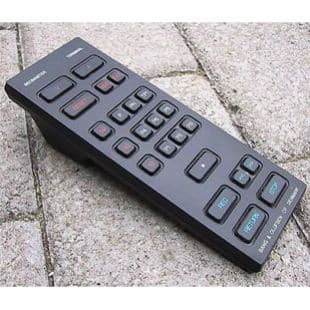

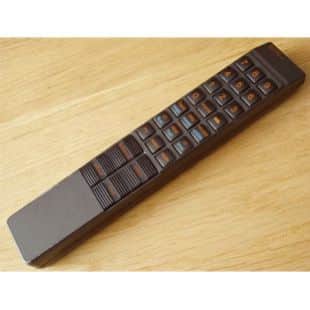
Your key to operational comfort
Around half of Bang & Olufsen’s colour TVs in the late 1970’s and early 1980’s were supplied complete with an advanced remote control handset – the Beovision Video Terminal. It was called a Video Terminal because it did so much more than just switch on the set or change programmes for you.
For normal entertainment viewing you simply touched the required programme number. Volume level, colour strength and picture brilliance could be adjusted up and down as desired – or returned instantly to a pre-determined norm by pressing RESET. You could even mute the sound instantly (perhaps if the phone rang) or check through the programmes showing on all the other channels – all at the touch of a single button.
The same terminal also controlled Teletext viewing on sets fitted wit the optional Teletext circuitry. And for those who chose to include Bang & Olufsen video cassette recorder (like Beocord Video 8800) as part of their domestic entertainment system, the controls for operating all the primary VCR functions were also right there in your hand. The Terminal let you make recordings, play the tape or wind it to any position without having to move from your comfortable armchair.
The Beovision Video Terminal was supplied with, for example, Beovisions 5100, 7100 and 8100. The Terminals for other models in the B&O range included all these keys and functions plus three more. Of course, it was still possible to operate a Beovision even if the remote Terminal was temporarily mislaid or out of action. The set’s direct controls were mounted in a hinged compartment behind the loudspeaker grille. The panel pivoted outward at a touch and in addition to the direct function controlled governing picture and sound adjustments and programme scanning, it contained the buttons for pre-tuning the buttons. Your dealer could use these to tune the set as part of the installation service. Thereafter you would probably never need to touch them again.
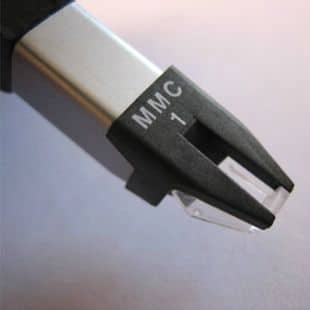
The MMC1 was the top of the range of B&O’s new cartridge range.
It was only available as an upgrade – even the top of the range Beogram 8002 was only fitted with the MMC2. The MMC1 had a line contact diamond mounted on a tubular sapphire cantilever.
The tubular construction offered less weight than a solid cantilever but with immense stiffness. The diamond profile was similar to that of the MMC20CL being line contact. The way to look at these cartridges was to imagine an elliptical profile but with both the front and rear facets being scooped out. In this way the vertical contact surface was maximised and the horizontal element kept to a minimum.
The MMC1 and MMC2 were essentially the same cartridge with the MMC1 using the best specified diamond tips. The MMC system was carried over from the SP series but taken to an even smaller level.
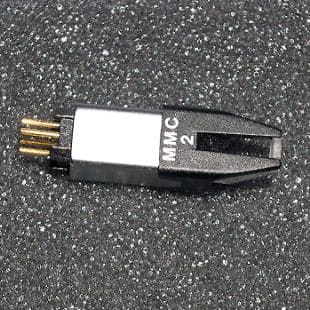
The MMC2 was the replacement in the B&O line up for the very successful MMC20CL.
Like the MMC1, it boasted a sapphire tubular cantilever and line contact diamond. It was fitted as standard to the top of the range Beograms such as the 8002 and the 7000.
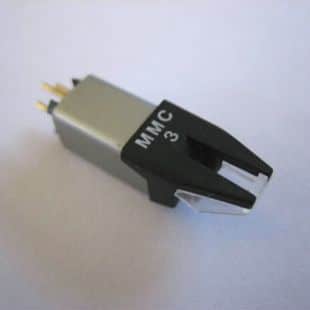
This cartridge was in many ways the replacement for the MMC20EN as it had a tapered cantilever and naked elliptical stylus.
It was fitted as standard to the Beogram 6002.
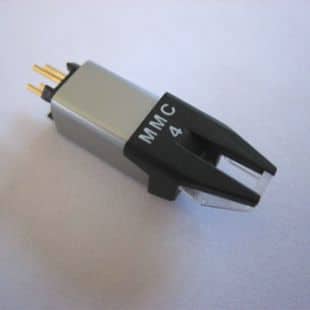
This could be regarded as the standard cartridge in the range and was fitted to many decks as standard.
In many ways a replacement for the MMC20E, it offered good performance at a most reasonable price
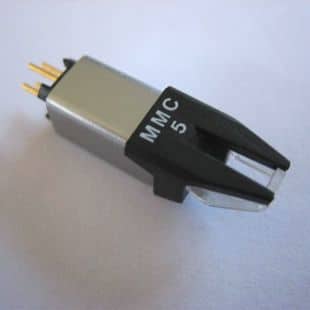
The most basic of the range, this cartridge was available to be specified for those decks not fitted with a cartridge as standard such as the Beogram RX.
It could be differentiated by its cantilever which was a straight non tapered aluminium tube.

Beomaster 2000 was an advanced 2 x 25 watts RMS receiver with Long, Medium and FM band radio coverage. Four FM stations could be pre-set for instant recall. There was also provision for pre-setting one AM station.
The low-distortion stereo amplifier included a new feature unique to Bang & Olufsen. It was called Automatic Power Handling Control (APHC). This was a technique whereby the dynamic range and power parameters of the signal were continuously monitored, and if their combined effect threatens to cause amplifier clipping or damage to the speakers, the APHC circuit instructed the set’s microcomputer to turn the volume down to a safe level.
All primary functions were operated by finger-tip contact on the Beomaster’s Sensitouch control panel. There were no knobs or buttons to press. The status of all controls was shown on an illuminated display panel. Secondary controls were protected beneath a self-opening lid that was released by touching the unit’s front edge.
Beomaster 2000 could be made up as part of the Beosystem 2000, when linked together with other compatible Bang & Olufsen products. The receiver was designed by Jacob Jensen and was a direct descendant of Beomaster 2400.

Beomaster 3000 was the central part of Beosystem 3000. It was an FM and AM receiver with four preset FM stations and a power output of 30 watts. Beomaster 3000 featured Automatic power Handling Control which protected amplifier and speakers against overload.
The electronic volume control ensured a smooth transition to more, or less, sound, and the volume level could be preset. By activating ‘mute’ you could silence a function without turning it off. Another touch, and the function resumed where it left off.
Add a Beocord 2000, a Beogram 3000 and maybe a Beogram CDX and you had a stylish and high performance set up. This receiver could be seen as the natural descendant of the Beomaster 2400-2.
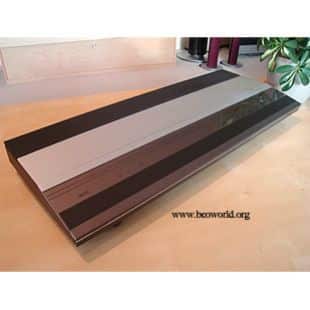
Beosystem 3300: a 2 x 40 watts RMS amplifier, an FM, long and medium wave radio, and a stereo record deck – was all combined into a single unit called Beomaster 3300. The record deck was fitted with the Bang & Olufsen MMC 20E cartridge. Two Beovox Uni-Phase S45 loudspeakers completed this value-for-money system.
Beosystem 3300: blending science and art
Bang & Olufsen designs are always refreshingly different – a pleasure to look at as well as to hear. Which could be why the company has earned itself over the years coveted places in the Museum of Modern Art in New York.
Beosystem 3300 was the latest addition to a collection which fascinated people from all over the world. You could hang it on the wall among your other works of art; or place it where you like – those sleek, modern shapes would always look good.
But Beosystem 3300 had a great deal more to offer than an ultra-modern appearance. With records, tapes, radio and compact discs it was a top quality music system that really knew how to perform, according to the 1988 catalogue.
Beomaster 3300 Type 2951
This receiver was the heart of the system, connected by Datalink to the other equipment and passing on the commands you gave via remote control, or by a light touch directly on the panel.
You could preset up to five radio stations. The amplifier had a power output of 2 x 30 watts and a power handling system which prevented overloading and distortion. Beomaster 3300 was part of Beosystem 3300 although it could be used as a stand-alone item.